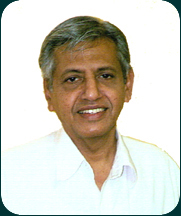 The latest from my teacher’s newsletter:
The latest from my teacher’s newsletter:
“In the olden days in India, especially in the South, women would not say the name of the husbands as it was considered disrespectful. A census inspector will have a difficult time getting the name of the spouse from the wife. One has to ask the other family members the name of one’s husband. Likewise, many of the potent mantras are not directly mentioned but only through the name of the mantra. If one wants to say the “OM” mantra one would more likely say the pranava mantra than just “OM” mantra, as Patanjali says in the Yoga Sutras. The meditation or chanting of the mantra would be referred to as pranava dhyana or pranava japa. Pranava itself is a beautiful word. Scholars refer to it as a word derived from the root “Nam” or “nam” to bow (Nam prahvi bhave) as used in namah or namaste. ‘Prakarshena nautithouti iti pranavah’, meaning pranava is the highest praise or obeisance to the highest principle, here Iswara or Brahman. Another interesting interpretation of this word comes from deriving the word from another root ‘nav’ (or nava) to begin or new like ‘novo’. Since Brahman is said to be pure consciousness and never changes it is always new, always ‘nava’ and hence pranava.
There are other important mantras who have separate names. The Gayatri mantra which is of the gayatri meter refers to the mantra starting with ‘tat savitur..’ and even though there are many other mantras in the Gayatri meter, only this particular mantra, the brain child of Viswamitra is referred to as gayatri. Then we have another famous mantra “namassivaya”. This namassivaya mantra is more often referred to as ‘panchakshari’ or five syllable mantra even as there are scores of other mantras which have five syllables. ‘Om namo narayanaya’ my Guru’s favorite mantra is known as ashtakshari as it has eight syllables. ‘Om namo bhagavate vasudevaya’ is a very popular Krishna mantra and is known as ‘dwadasakshari’ as there are 12 syllables in it.
The mantras especially pranava were chanted, meditated upon and referred to with considerable devotion and respect in the olden days. Contemporary use of ‘OM’ on tea shirts, vests and other casual wares is sometimes difficult to put up with.” *
*I have to say that seeing an OM tattoo on someone’s foot gives me pause. Think twice before putting an OM tattoo below the waist — this shows respect. Just call me old-school. – L-S

Yeah… I sort of get why people have ‘om’ tattooed on the body. It’s obvious, immediate and something they recognise. But for me, the obvious part was always a bit of an issue. I like this take on using secret names, and I’ve had the teaching before about how names are power.
I have one singlet with an om design although it’s very decorative and not easy to pick out as an om unless you know what you’re looking at. Which is why I liked it. 🙂
LikeLike
I have an OM tattoo, but it’s not below the waist. and I do have Hindu prayer scarves (the types the priests wear) which of course have OM on them, among other mantras. but an OM on feet? no. if people understood the thing about feet in India, they wouldn’t place a sacred symbol on their foot.
LikeLike
I’ve never seen an Om tattoo on feet…
LikeLike
yet….;)
LikeLike